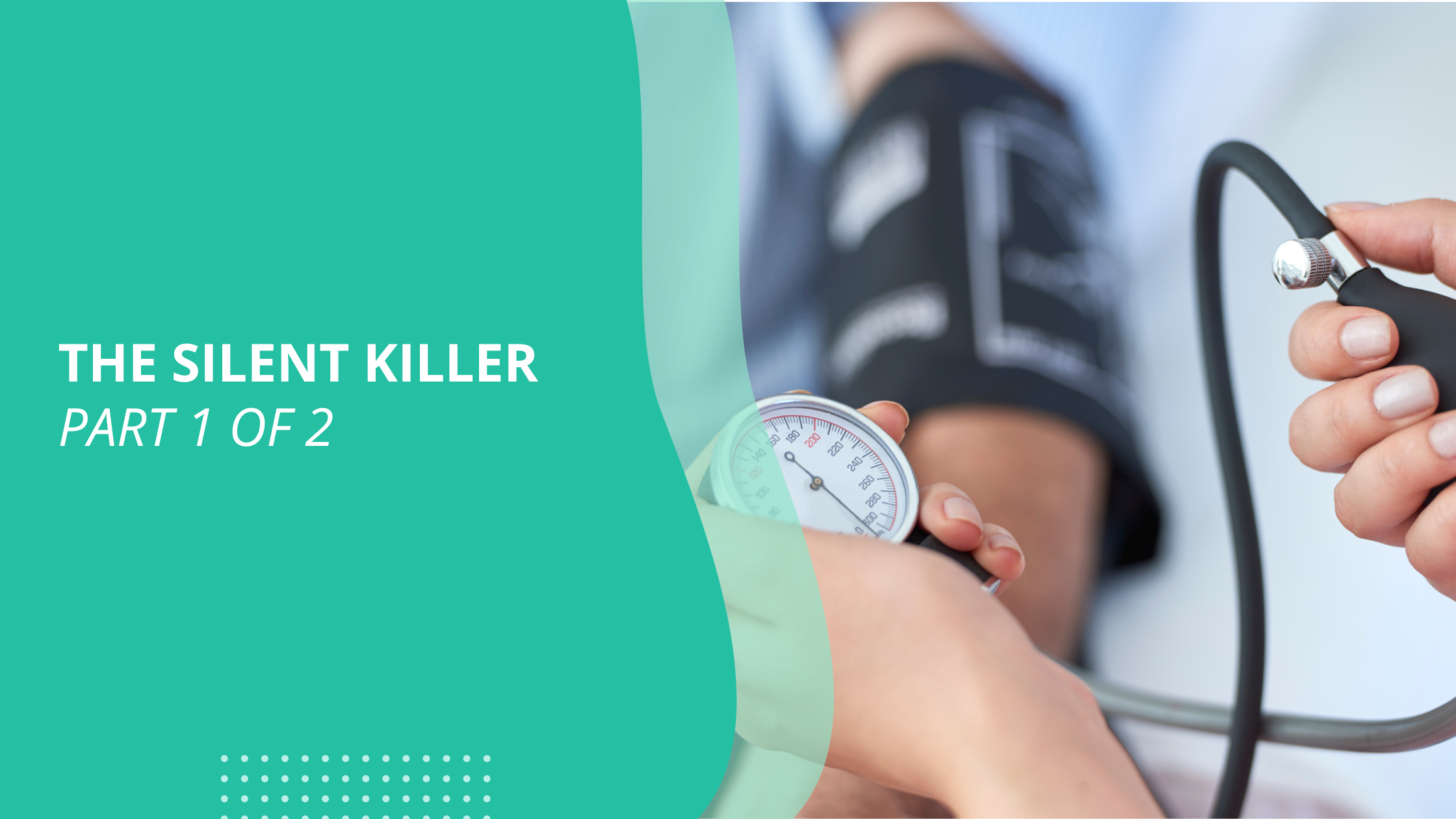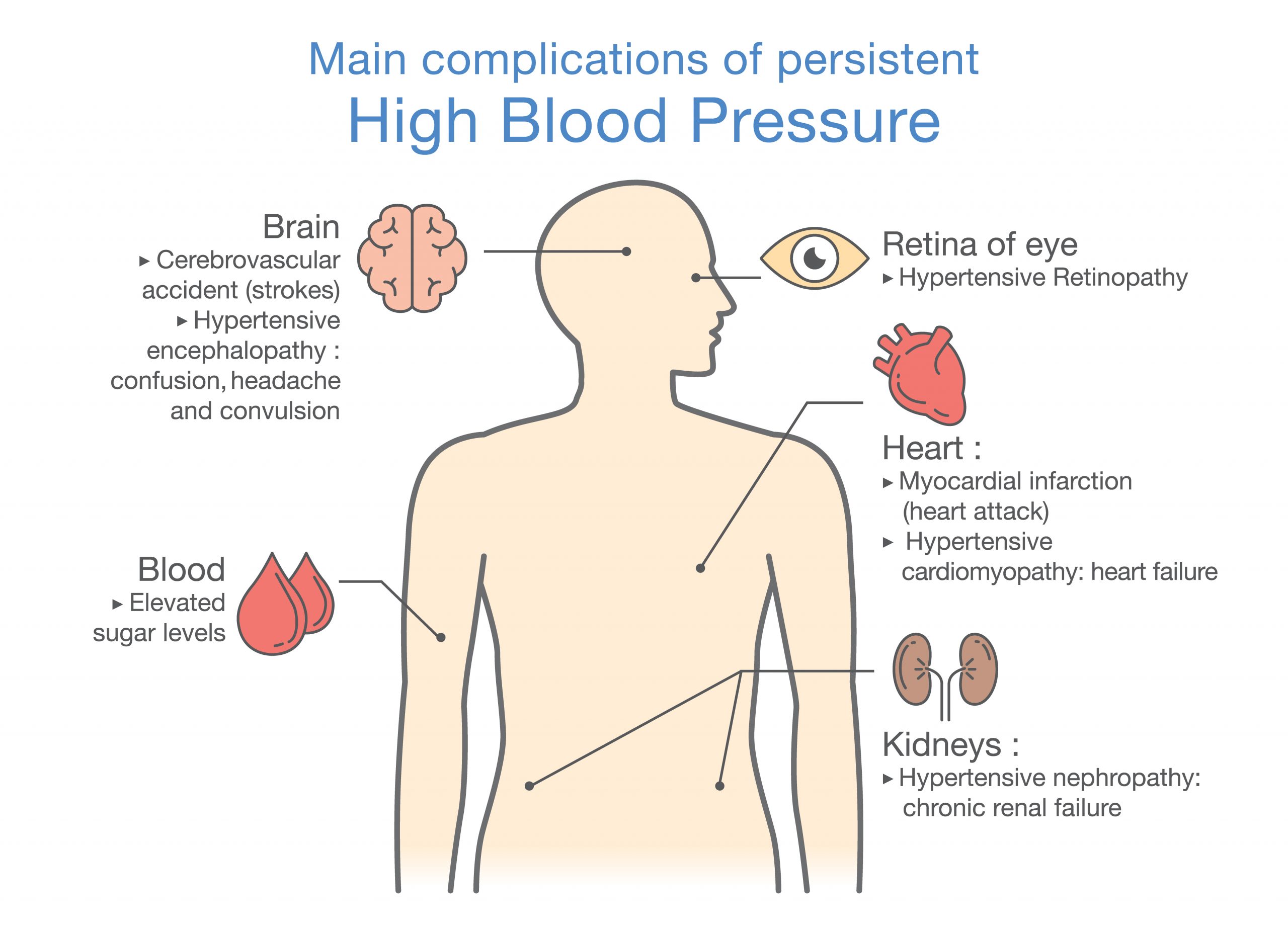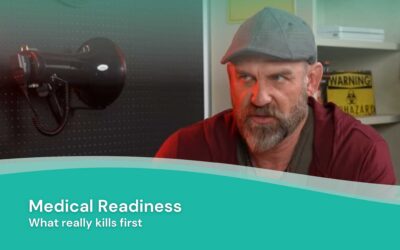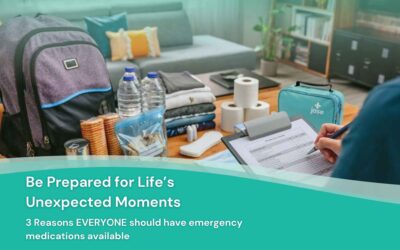
Part 1
High blood pressure (HBP) has been called the silent killer and with good reason. It is estimated that at least 20 percent of the population with high blood pressure have no symptoms.
In part 1 we will discuss:
- Symptoms of hypertension
- Health risks of uncontrolled hypertension
- Stages of hypertension
- Types of hypertension
- How to take blood pressure at home
Part 2 will discuss:
Physiology of blood pressure regulation, lifestyle, nutrition, and medications to help control hypertension.
Symptoms associated with hypertension:
- Ringing in ears
- Headache
- Dizziness
- Confusion
- Visual disturbances
- Difficulty breathing
- Chest pain
- irregular heartbeat
- In severe cases blood in urine
In the US alone nearly half of adults in the United States (47%, or 116 million) have hypertension, defined as a systolic blood pressure greater than 130 mmHg or a diastolic blood pressure greater than 80.

Health risks of uncontrolled hypertension
Uncontrolled hypertension increases your risk of kidney disease, cognitive decline, heart disease and stroke and more.
Stages of hypertension
(The top number is systolic and measures the pressure in your arteries when your heart beats
The bottom number is diastolic -when the heart muscle relaxes.)
All blood pressure measurements over 120/80 mm Hg are considered elevated in adult population
As of 2021 AHA blood pressure guidelines:
- Normal = less than 120 and less than 80
- Elevated = 120-129 and less than 80
- Stage 1 = 130-139 or 80-89
- Stage 2 = 140 or higher or 90 or higher
- Hypertensive Crisis (call your care provider immediately) = Higher than 180 and/or higher than 120
Types of hypertension
Primary Hypertension
Caused by one or more of the following: poor diet, smoking hereditary alcohol, lack of exercise, obesity.
- Blood pressure is high on three or more visits to care provider.
- May have no symptoms, but you may experience frequent headaches, tiredness, dizziness, or nose bleeds.
Secondary Hypertension.
Caused by a medical condition or medication.
Examples include:
- Airway obstruction during sleep and sleep apnea.
- An abnormality in the arteries supplying blood to the kidneys
- Adrenal gland tumors
- Thyroid disease
- Medications that can cause HPB:
- Pseudoephedrine, (Sudafed)
- NSAIDS (non-steroidal anti-inflammatory drugs
- Select antidepressants
- ADHD medications
- Birth control pills
- Decongestants
- Steroids and immunosuppressants
Resistant Hypertension
- Defined as 3 or more hypertension medications prescribed and blood pressure still not controlled.
- 20-30 percent of HBP patients have resistant hypertension.
- May be genetic.
- More common in obese, older female patients.
- Underlying cause may be diabetes or kidney disease.
Isolated Systolic Hypertension.
- Blood pressure defined as systolic over 140, diastolic is normal- below 90.
- Most common in people over the age of 65 and is due to the loss of elasticity in the arteries.
Malignant Hypertension.
- Rare, occurs in less than 1 percent of patients diagnosed with high blood pressure.
- More common in younger adults, especially African American men.
- This hypertension type occurs in only about 1 percent of people with hypertension.
- It is more common in younger adults, African American men, and women who have pregnancy toxemia.
- Blood pressure rises rapidly and can be a medical emergency.
- Symptoms include numbness in the arms and legs, blurred vision, confusion, chest pain, and headache.
White coat syndrome
- White coat syndrome is a condition in which your blood pressure is high at your healthcare provider’s office, but you get a normal reading at home.
- Can be an underlying risk for future health problems.
- Left untreated, patients have a 36 percent increased risk of heart disease, 33 percent increased risk of death and 109 percent increased risk of death from heart disease.
- Previously believed this syndrome was exclusively due to anxiety from clinic visits, however closer monitoring of blood pressures taken outside clinic setting point to unstable blood pressure readings.
How to take blood pressure at home
Here is a short video on how to properly take blood pressure
Blood pressure should be taken at the same time in the same setting as often as your care provider recommends.
- Don’t eat or drink anything 30 minutes before you take your blood pressure.
- Empty your bladder before your reading.
- Sit in a comfortable chair with your back supported for at least 5 minutes before your reading.
- Put both feet flat on the ground and keep your legs uncrossed.
- Rest your arm with the cuff on a table at chest height.
- Make sure the blood pressure cuff is snug but not too tight. The cuff should be against your bare skin, not over clothing.
- Do not talk while your blood pressure is being measured.
- Take 2 readings, at least 1-2 minutes apart
- Log your results. Attached is a pdf supplied by the AHA to log your readings
- Brooke Lounsbury, RN
Medical Content Writer
Lifesaving Medications
Recent Posts
Keeping you informed and safe.
Medical Readiness: What Really Kills First
When Disaster Strikes, It’s Not Hunger or Thirst That Takes the First Lives In every disaster zone, from hurricanes in the Caribbean to war zones in Ukraine, the pattern is the same. People worry about food and water, but it’s infection that kills first. A small wound...
Exploring Dr. William Makis’ Hybrid Orthomolecular Cancer Protocol: Focus on Ivermectin and Mebendazole/Fenbendazole
Exploring Dr. William Makis’ Hybrid Orthomolecular Cancer Protocol: Focus on Ivermectin and Mebendazole/Fenbendazole *Disclaimer: This article is for educational purposes and does not constitute medical advice. Always seek professional guidance.* In the evolving...
Be Prepared for Life’s Unexpected Moments
3 Reasons EVERYONE should have emergency medications avaiable. It's all about access—access to medications and care when you need it most. And when things happen outside of your control that access can disappear.Below are 3 examples of how easily this access can be...















